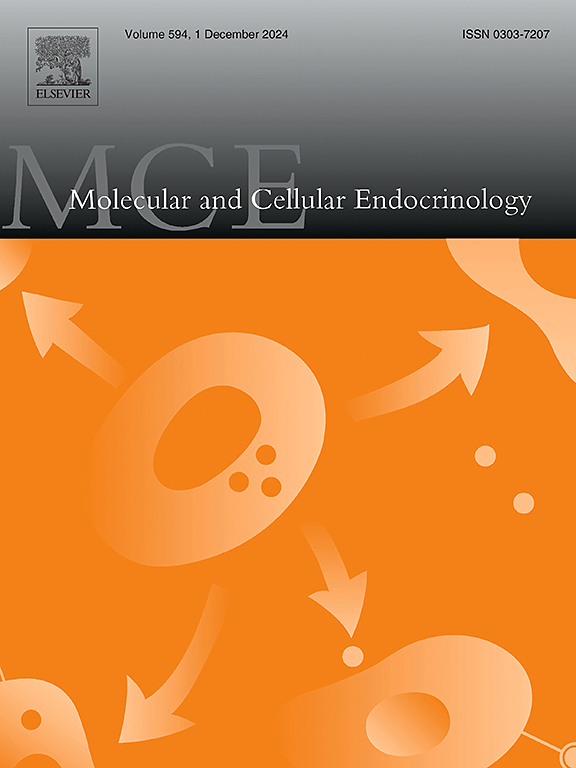内分泌干扰化学物质,对羟基苯甲酸甲酯,在环境相关的暴露促进对下丘脑-垂体-甲状腺轴的有害影响。
IF 3.8
3区 医学
Q2 CELL BIOLOGY
引用次数: 0
摘要
对羟基苯甲酸甲酯(Methylparaben, MP)属于对羟基苯甲酸酯类,被广泛用作个人护理产品、药品和某些食品的防腐剂。MP作为内分泌干扰物(EDC)作用于下丘脑-垂体-甲状腺(HPT)轴。然而,MP的作用尚未完全阐明,因为已发表的结果很少且有争议。本研究的目的是评估亚急性暴露于MP对雄性大鼠HPT轴的影响。为此,本研究将动物分为4个实验组:对照组、MP3组、MP30组和MP300组(分别为3、30和300 μg/kg/d)。大鼠灌胃14 d, MP治疗结束后处死。我们的研究结果表明,MP可以促进甲状腺形态学的重要变化,包括滤泡面积、胶质面积、上皮面积和上皮高度的减少,影响HPT轴的稳态,并影响激素生物合成相关基因的表达。此外,间质胶原沉积也发生了变化。最后,我们得出结论,暴露于MP可能对健康有害,因为它涉及甲状腺的失调,影响其形态生理,这表明即使是目前立法认为安全的剂量也可能是危险的,应该重新考虑。本文章由计算机程序翻译,如有差异,请以英文原文为准。

Endocrine-disrupting chemical, methylparaben, in environmentally relevant exposure promotes hazardous effects on the hypothalamus-pituitary-thyroid axis
Methylparaben (MP) belongs to the paraben class and is widely used as a preservative in personal care products, medicines, and some foods. MP acts as an endocrine disrupting chemical (EDC) on the hypothalamic-pituitary-thyroid (HPT) axis. However, the effects of MP have not yet been completely elucidated, as published results are scarce and controversial. The objective of this work was to evaluate the effects of subacute exposure to MP on the HPT axis of male rats. To achieve this, in this study the animals were divided into four experimental groups: control, MP3, MP30 and MP300 (3, 30 and 300 μg/kg/day, respectively). The rats were gavage for 14 days and sacrificed at the end of MP treatment. Our findings demonstrated that MP can promote important changes in thyroid morphology, including a decrease in follicular area, colloid area, epithelial area, and epithelial height, affecting the homeostasis of the HPT axis, and affecting the expression of genes related to hormonal biosynthesis. Furthermore, changes in interstitial collagen deposition were also demonstrated. Finally, we conclude that exposure to MP can be harmful to health, as it is involved in the dysregulation of the thyroid gland, affecting its morphophysiology, suggesting that even doses considered safe by current legislation can be dangerous and should be reconsidered.
求助全文
通过发布文献求助,成功后即可免费获取论文全文。
去求助
来源期刊

Molecular and Cellular Endocrinology
医学-内分泌学与代谢
CiteScore
9.00
自引率
2.40%
发文量
174
审稿时长
42 days
期刊介绍:
Molecular and Cellular Endocrinology was established in 1974 to meet the demand for integrated publication on all aspects related to the genetic and biochemical effects, synthesis and secretions of extracellular signals (hormones, neurotransmitters, etc.) and to the understanding of cellular regulatory mechanisms involved in hormonal control.
 求助内容:
求助内容: 应助结果提醒方式:
应助结果提醒方式:


